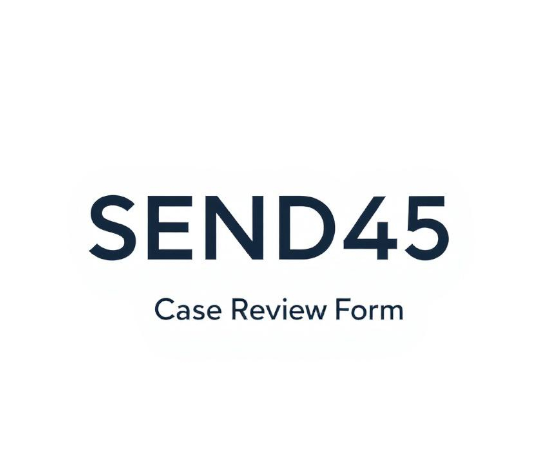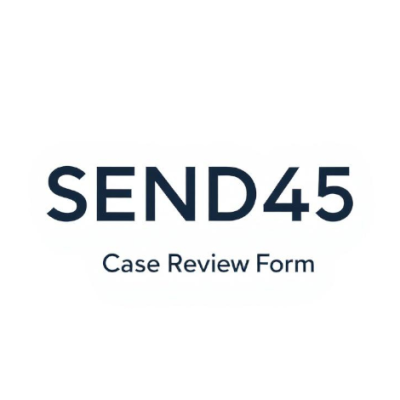A Parent’s Guide to Telling the Truth, Statutorily
If you’ve received a SEND 45 Case Review form from the First Tier Tribunal for SEND you’re likely at a pivotal point in your child’s journey as appointee or guardian within SENDIST First Tier Tribunal. This form is delivered within the bundle you receive after you have lodged your SEND appeal.
This is your opportunity to set the record straight, highlight procedural failings, and centre your child’s lived experience.
Here’s how to approach it with clarity, confidence, and statutory precision.
What Is the SEND 45?
The SEND 45 is a Case Review document used by SEND Tribunals to gather updated information from parents and carers about:
- Progress of the Appeal: Parents must specify which issues are still in dispute (e.g. refusal to assess, contents of EHCP, placement, etc.).
- Working Document: If the appeal concerns EHCP content, parents should confirm whether a working document exists and provide the latest version.
- Headline Issues: A list of unresolved matters that the tribunal needs to decide.
- Educational Placement: Details about current attendance and the placement requested by the parent vs. the LA’s proposed placement.
- Readiness for Hearing: Parents indicate whether the appeal is ready for final hearing and, if not, explain why.
- Timetable Requests: Option to agree or request a revised timetable, including deadlines for evidence and final documents.
- Representation and Witnesses:
- Whether the parent has a representative.
- Whether a parental supporter or advocate will attend.
- Names and occupations of witnesses.
- Confirmation that witness statements have been provided.
- Special Requirements: Any accessibility or support needs for the hearing.
- Type of Hearing: Whether the parent consents to a paper-based decision or prefers an oral hearing.
- Additional Information: Space to share anything else relevant to the hearing.
This information feeds into tribunal bundles. So your words matter. For a tribunal parent friendly checklist click here
Here’s a breakdown of what parents typically need to include in each section of the SEND45 Case Review form, with guidance to help you write clearly and strategically:
Progress of the Appeal
This section asks you to confirm which parts of your appeal are still unresolved.
What to include:
- Tick or list the issues still in dispute (e.g. refusal to assess, contents of EHCP, placement).
- Briefly explain why these issues remain unresolved, referencing any failed attempts at resolution or ongoing disagreement with the LA.
Tip: Keep it focused. “Despite multiple working document revisions, the LA continues to reject the EP’s recommendation for specialist placement.”
Working Document
If your appeal relates to EHCP content, this section checks whether a working document exists.
What to include:
- Confirm whether you’ve exchanged a working document with the LA and what version you are at.
- State the date of the most recent version and whether it reflects any agreed changes.
Tip: If no working document exists, explain why. “The LA has not responded to requests to initiate a working document despite two follow-up emails.” If the LA are working slow with returning updated versions then mention this too.
Headline Issues
This is your chance to list the key matters the Tribunal needs to decide.
What to include:
- A bullet-point list of unresolved issues, such as:
- “Whether the EHCP accurately reflects the child’s sensory needs.”
- “Whether the proposed mainstream placement can meet need.”
Tip: Use plain language but link each issue to evidence. “The SALT report recommends weekly therapy, which is not reflected in Section F.”
Educational Placement
This section covers current attendance and your preferred placement.
What to include:
- Where your child is currently attending (or not attending).
- Your requested placement and why it’s suitable.
- The LA’s proposed placement and why it’s unsuitable (if applicable).
Tip: Be clear and evidence-led. “The current school has implemented a part-time timetable due to unmet need. We are requesting a specialist setting with therapeutic support.”
Readiness for Hearing
The Tribunal wants to know if you feel ready for the hearing.
What to include:
- Confirm whether you’re ready.
- If not, explain what’s missing (e.g. outstanding reports, unresolved working document).
Tip: If you’re not ready, request a revised timetable and explain why. “We are awaiting an updated OT report due on [date], which is critical to resolving Section F.”
Timetable Requests
This section allows you to agree or request changes to the case timetable.
What to include:
- Confirm if you agree with the current timetable.
- If not, propose new deadlines and justify them.
Tip: Be realistic and link to evidence. “We request a two-week extension to submit final evidence due to delays in receiving the EP report.”
Representation and Witnesses
This section confirms who will support you and who will give evidence.
What to include:
- Whether you have a legal representative or advocate.
- Names and roles of any witnesses (e.g. EP, SALT, school staff).
- Confirmation that witness statements have been submitted or will be.
Tip: Include only relevant witnesses and ensure their statements are clear and submitted on time.
Special Requirements
This is where you can request adjustments for the hearing.
What to include:
- Any access needs (e.g. hearing loop, breaks, remote attendance).
- Emotional or sensory considerations for you or your child.
Tip: Be honest. “Due to anxiety and sensory sensitivities, I request a remote hearing with scheduled breaks.” or “Due to my disability I require extra time to process questions directed at me”
Type of Hearing
You’ll be asked whether you consent to a paper-based decision or prefer an oral hearing.
What to include:
- Tick your preference.
- If requesting an oral hearing, explain why it’s necessary.
Tip: Oral hearings allow you to speak directly to the panel. “Due to the complexity of the case and disputed evidence, we request an oral hearing.”
Additional Information
This is your space to add anything else relevant.
What to include:
- Summary of procedural failings.
- Clarification of your child’s lived experience.
- Any safeguarding concerns or urgent issues.
Tip: Use this section to humanise the case. “Our child has been out of education for 6 months due to EBSA. The LA’s failure to act has compounded trauma.”
Don’t be afraid of this form it’s not a test, and it’s not about getting the wording “just right.” It’s your opportunity to speak truthfully, document what’s happened, and advocate for what your child genuinely needs. Use it to your advantage: highlight gaps, challenge inaccuracies, and bring your child’s lived experience to the forefront. Remember the end goal—securing lawful, appropriate support—and stay focused on that throughout.
And don’t worry if the working document isn’t perfect yet. It’s called a working document for a reason it can be updated and refined right up until 10 working days before the hearing. If it helps, draft your answers on a separate piece of paper first. Take your time, reflect, and only submit when you feel confident that your voice has been clearly heard. You’ve got this!
Need further support – book a mentor support call to run through your evidence thus far and gain clarity! Book here: Talk to a Mentor | Personal Support for SEN Parents
Further resources that you will find beneficial:
VLOG – What does Tribunal look like? – SEN Parent Support Group
RESOURCE: Courts and Tribunals Judiciary (July 25) – SEN Parent Support Group
LETTER: Enforcing Interim Education at Tribunal. – SEN Parent Support Group
TRAINING: CPD Training on SENDIST TRIBUNALS. – SEN Parent Support Group









